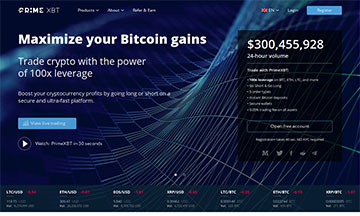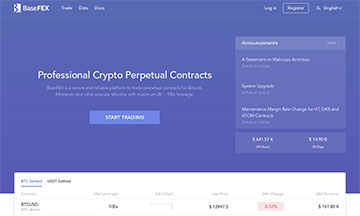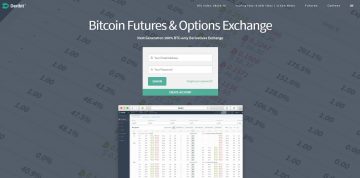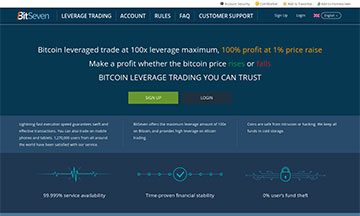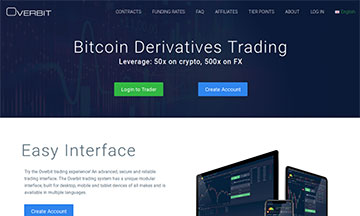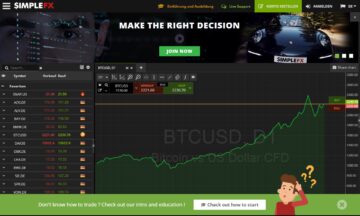Bitcoin Margin Trading
Margin trading in the Bitcoin world isn’t something new but it is not offered on every trading websites today. You may call it “specialized” in some way but in reality, it attracts a niche of people that know how to use the disadvantages to their make or create profit. Yes, there are disadvantages in margin trading and people that know and respect these are the ones that walk out with money in their pockets.
Today, we will be talking about how margin trading works in general, what are the best trading platforms to practice margin trading, and hopefully get you examples on how everything is done by the end of this review. Without further delay, let’s talk about that!
Where can you trade BTC with Leverage?
Now that you’ve got a firm idea on how leverage trading works, let’s move on to the next step and check out which websites that offer leverage trading services. Below are websites that offer leveraged trading:
PrimeXBT – 1:100 – PrimeXBT right now is among the most popular margin trading websites for cryptocurrencies. They not only offer 100:1 leverage for BTC/USD but also for the altcoin pairs they support.
– PrimeXBT right now is among the most popular margin trading websites for cryptocurrencies. They not only offer 100:1 leverage for BTC/USD but also for the altcoin pairs they support.
The company was only founded in 2018 but could reach the top of margin broker rankings in short time. This is due to their excellent combination of features such as high leverage for all cryptocurrency pairs, advanced order tpes, no KYC and their portfolio not only existing of cryptos but also traditional trading assets (all CFDs).
Kraken– 1:50 – Kraken is one of the oldest and largest cryptocurrency exchange which recently introduced margin trading up to 50:1 leverage on future contracts. Founded in 2011 and with a headquarter in San Francisco, Kraken serves customers worldwide, including traders in the United States. Only basic KYC process needs to be passed to be ready to trade on your account. The platform supports trading with up to 30 different altcoins, USD, EUR, CAD, GBP and JPY. ** Kraken is US Friendly! Margin Trading for US Citizens **
– Kraken is one of the oldest and largest cryptocurrency exchange which recently introduced margin trading up to 50:1 leverage on future contracts. Founded in 2011 and with a headquarter in San Francisco, Kraken serves customers worldwide, including traders in the United States. Only basic KYC process needs to be passed to be ready to trade on your account. The platform supports trading with up to 30 different altcoins, USD, EUR, CAD, GBP and JPY. ** Kraken is US Friendly! Margin Trading for US Citizens **
BaseFEX – 1:100 – BaseFEX is among the crypto margin brokers with the highest leverage. Customers can trade BTC/USD with 1:100 leverage, other coins with up to 1:50.
– BaseFEX is among the crypto margin brokers with the highest leverage. Customers can trade BTC/USD with 1:100 leverage, other coins with up to 1:50.
The platform is especially clear designed, as a contrast to other broker sites that often look overloaded with information and too complicated for newbies. The simple interface should be especially appealing for beginners since it looks more easy to understand and handle. Apart from BTC, traders can choose from a variety of big altcoins that can be traded as well in the form of CFDs.
 Deribit – 1:100 – Deribit is a specialized Bitcoin Futures and Options broker. Traders can use leverage up to 100:1 for Futures and 1:10 for Options.
Deribit – 1:100 – Deribit is a specialized Bitcoin Futures and Options broker. Traders can use leverage up to 100:1 for Futures and 1:10 for Options.
They have been the first broker worldwide to offer “Vanilla” European Options. Besides a highly professional trading platform they also focus on education in the form of training videos available on their platform, which is a real quality sign when it comes to broker platforms. Moreover, Deribit convinces with low trading fees.
BitSeven – 1:100 – BitSeven is another highly professional cryptocurrency margin trading platform with leverage of up to 100:1. Just like their main competitors, BitSeven only allows BTC deposits and withdrawals.
– BitSeven is another highly professional cryptocurrency margin trading platform with leverage of up to 100:1. Just like their main competitors, BitSeven only allows BTC deposits and withdrawals.
Other than with Overbit, BitSeven doesn’t claim ID verification from their traders, so they don’t follow a strict KYC policy, which is one of the reasons for many traders to choose this broker platform. Other reasons are the very stable trading engine or the fact that the platform is available in many languages.
OVERBIT – 1:50 – OVERBIT is a broker platform offering cryptocurrency CFD trading with up to 50x leverage.
– OVERBIT is a broker platform offering cryptocurrency CFD trading with up to 50x leverage.
The coins that can be traded are BTC, ETH, LTC, ADA, NEO, XRP and BCH. The only available trading instrument are contracts for difference or so-called perpetual swap contracts. Other than with PrimeXBT, ID verification is mandatory if you want to start trading on Overbit. On the other hand, their unique no fees policy is a big benefit. The only fees that can occur are funding fees for open positions that are held over 3 certain hours during a day (01:00 UTC, 09:00 UTC and 17:00 UTC).
SimpleFX – 1:6 – SimpleFX is a cryptocurrency CFD broker offering leverage of up to 6:1.
– SimpleFX is a cryptocurrency CFD broker offering leverage of up to 6:1.
The big benefit of SimpleFX is their awarded trading app. And, for many professional traders such a comparably low leverage is absolutely sufficient. The tradable cryptocurrencies are BTC, ETH, ADA, LTC, NEO, BCH and XRP. Just like most of the foregoing platforms SimpleFX works with perpetual swap contracts, the industry standard model for cryptocurrency CFDs. With SimpleFX ID verification is only necessary for traders who want to deposit or withdraw fiat money.
How does Crypto Margin Trading work?
Margin Trading, in general, is trading with a loan from the website or chosen platform. This means that the trader doesn’t need to have to shoulder 100% of the trading price for the order to push through. For example: If there’s a position for a $100 trade, the trader provides $20 and the platform loans the trader $80 to complete the order. Of course, this means that the trader needs to pay the platform their margin trading fee for the loan that they provided.
It is not advisable for new traders to tread this risky trading pathway but it wouldn’t hurt to get you informed and educated on the things that you need to keep in mind and apply it for your future trades.
When talking about margin trading it wouldn’t be a surprise that you will come upon new phrases that will eventually be a part of your daily trading life. Below are very common terms that are being used all throughout different trading platforms with little to no variations.
- Stop Loss – Is a margin traders’ best friend. This is because with the Stop Loss button/ability traders will be able to set up a safety net and control the drop in value and minimize losses by creating a cap. Once that cap is reached the trade automatically closes and further damage can be contained.
- Take Profit – The take profit order is the anchor that helps you keep your mind straight and away from greedy impulsive decisions. Just like the stop loss order, this creates a cap but instead for your profits. The order maximizes possible income before prices start to dip. Of course, take profit orders are not magic wands that would initiate the maximum profit margin for you, this requires skill and practice. Think of it as a pin on a map; it points out your interest and marks it for you.
- Long Position – A long position order is placed when a trader wants to profit from the growth of the market. The trader buys futures for low prices and waits for it to increase, then profits from the process.
- Short Position – A short position is a combination of a few orders made into one; which makes it a little complicated than the straightforward orders aforementioned. The short position starts when a position is opened from the falling price of BTC or any other asset possible for shorting. To initiate the falling of prices, the trader takes a futures position from a broker and sells them on the exchange (where they would want to short) for a higher price than purchased and wait for it to fall. Once prices fall, the trader purchases contracts for a cheaper price which provides profits for the trader.
- Leverage – Are the funds that an exchange is willing to loan traders in order to push through larger trades without shelling a crazy amount of money.
Major Purposes of Margin Trading:
For people that are wondering why traders go for margin trading, we’ve got a couple of points that you might want to consider before investing in this type of trading.
- Unlike a regular trade; trading with margin means that the trading position chosen is greater than your available capital. This means that the exchange website grants the trader an upper hand when it comes to tackling larger traders but turns into poison if all goes south.
- You can easily multiply your capital into crazy amounts if you have a lot of BTC under your portfolio. This is why whales (person with huge funds) love to play in websites that provide healthy leverage trading.
Bitcoin Margin Trading Examples
The examples below show the idea behind going long and short with a 1:10 leverage sample and $100 = 0.0001 BTC:
- Going Long – Going long means that the trader is thinking in advance and want to bet on the chance that they will be able to profit from the increase in BTC value; if it increases in value. Let’s say that they’ve got 10 BTC in equity and with 10:1 leverage the trader can control a futures position worth 100 BTC due to the leverage provided. To go long the trader needs to purchase 100 BTC divided by $100 multiplied by 0.0001 BTC which is equivalent to 100,000 contracts. If the price of BTC goes up (as the trader wants it to) the value of BTC rises to $110 multiplied by 0.00001 BTC which is equivalent to 100,000 contracts now worth 110 BTC with a profit of 10 BTC minus the leverage.
- Going Short – Going short is exactly the opposite of going long. This means that the trader holds on to the idea that BTC prices will fall down and they want to profit from that speculation. Let us use the same numbers as mentioned earlier. The trader has 10 BTC worth of equity with 10:1 leverage offered by the exchange. Contracts go for $100 which means that the value is at 0.00001 BTC per dollar. If the price of BTC falls down 1% this will mirror with the value and BTC will decrease by one percent as well. This means that if the price falls down by 10% the trader still makes a profit of 10 BTC since they placed a bet on BTC price going down.
Pros and Cons of Bitcoin Margin Trading
Pros
- Very high gains (the larger the gain, the higher the risk involved)
Cons
- Fees are very high (for leveraged trading)
- High trading risk (especially for new traders)
- Not beginner friendly (high leverages are not suitable for beginner traders)

